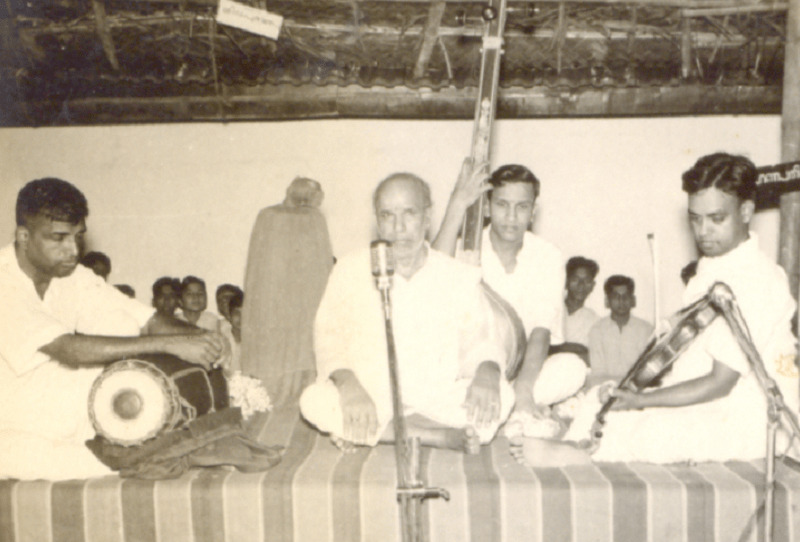Palghat Rama Bhagavather, a Carnatic musician with an unquenchable thirst for Carnatic music, was noted for beautifully rendering rare and common ragas in his own style, wrote V. S. Namboothiripad, Kerala’s first music critic in 1954.
Palghat Rama Bhagavather, who is still popular in the realm of Karnatic music, is above sixty. He is one of the few living links connecting the old and the new in the golden chain of the Carnatic Sangita Vidwans of high calibre. He rose to fame in those good old days when there were no academies, no annual music festivals so abundant as today, no music critics and no newspaper publicity. Merit alone mattered in those days. He embodies Carnatic music at its best and is the inheritor of some great traditions represented by Palghat Anantha Rama Bhagavather and Umayalpuram Swaminatha Iyer.
In search of a guru
Born of humble and pious parents, Rama Bhagavather showed keen aptitude for classical Carnatic music from very early days; as a result he often accompanied his elder brother Venkita Krishna Bhagavather, the greatest living vocal exponent of Kathakali, to sing with him in Kathakali performances. The elementary lessons were taught by this elder brother to Rama Bhagavather in his early days. His unquenchable thirst for classical Carnatic music soon made him leave his home in search of a guru or master.
Those were the days when Anantha Rama Bhagavather was in the zenith of his fame in the Carnatic music world. He was permanently settled at Kumbhakonam, the fountainhead of South Indian music and he paid visits to Palghat only occasionally. During one of such visits, Rama Bhagavather went and prostrated before that vocal wizard requesting him to accept him as one of his disciples. Struck with the sincerity and devotion of young Raman, the great music giant found it impossible to refuse the request and with him, Rama Bhagavather was associated till the death of the former. It was during this apprenticeship that he got the valuable musical advice of Umayalpuram Swaminatha Iyer, the custodian of Umayalpuram School of the Carnatic music of Thyagaraja Sishya-Parampara.
Rama Bhagavather’s name began to be known widely in music circles while he was an apprentice under his guru, as in Upasadhaka and after his master’s demise, Rama Bhagavather began to hold performances which soon won high popularity amongst the music lovers.
A style of his own
The voice of Rama Bhagavather may be called of a cultivated quality gained as result of strenuous training. His long extended probation enabled him to forge a style of his own purely with Carnatic classicism. Those who closely follow his performances from beginning to end, can see that there is no speed adventures in his voice, but there is a broad-based even melody all over. He is noted for beautifully rendering rare and common ragas stressing on the identifying notes of each raga in his own style. As far as his masterpieces are concerned, the elaboration of some rare ragas like Udaya Ravichandrika and Maniramgu and famous Ragas like Kharaharapriya and Kedaragowla, and the presentation of some compositions like Rama nee samana, Enthudaginado and Ramamanoratha hoya sada are worth special mention.


1 Comment
I remember having heard a 78 RPM gramophone record of Rama Bhagavathar long back. The compositions were Ragaratnamalikache in Reethigowla and Mayatheetha Swarupini in Mayamalavagowla. The rendering was excellent!!